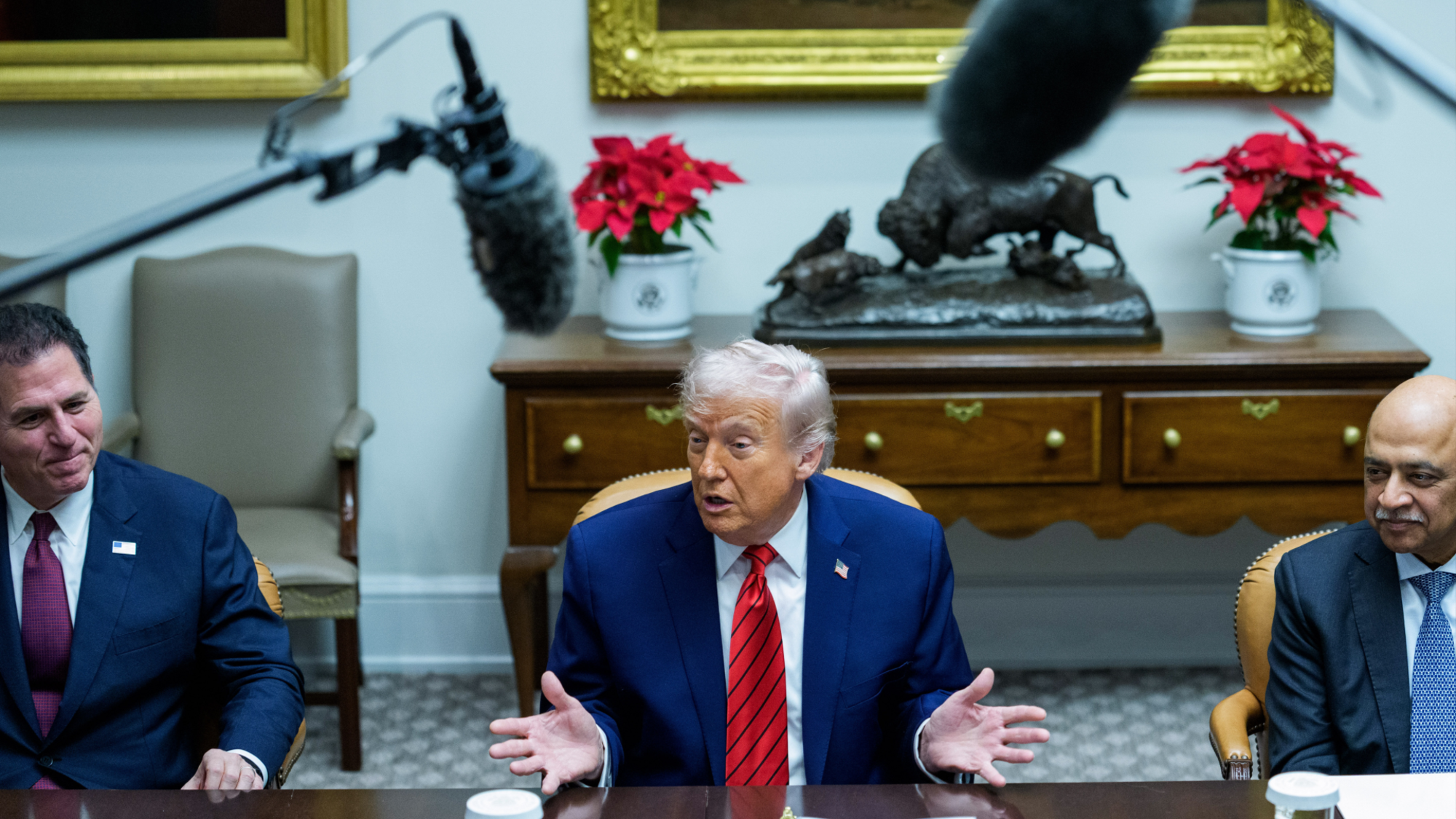The future of Social Security
When F.D. Roosevelt created Social Security more than two generations ago, he did so to protect Americans “against the loss of a job and against poverty-ridden old age.” The system may no longer meet this promise. Is Social Security in crisis?
Who benefits from Social Security?
More than 96 percent of American workers. In fiscal year 2000, some 45.4 million retired and disabled workers and their dependents—widows and widowers, spouses, and children—received $415 billion in benefits. The government estimates that without Social Security, nearly half of all senior citizens would live in poverty. The system has been called “the third rail of American politics” because elected officials touch it at their own risk.
Where do Social Security funds come from?
The Week
Escape your echo chamber. Get the facts behind the news, plus analysis from multiple perspectives.

Sign up for The Week's Free Newsletters
From our morning news briefing to a weekly Good News Newsletter, get the best of The Week delivered directly to your inbox.
From our morning news briefing to a weekly Good News Newsletter, get the best of The Week delivered directly to your inbox.
Primarily from payroll taxes. The standard payroll rate has changed 20 times since Social Security’s inception and is now 12.4 percent, divided equally between worker and employer. Last year, although $415 billion was paid out, the system actually took in $568 billion. The excess was credited to the trust funds. Contrary to popular belief, an individual’s Social Security contributions are not earmarked for his or her own retirement. Rather, they are used to fund benefit payments for current retirees. Unfortunately, the ratio of those paying for Social Security to those benefiting from it is shrinking. In 1940, there were 42 workers for every person receiving benefits. Today there are about 3.4. In 2038, there will be 2.1.
Is the system in trouble?
That’s the preliminary conclusion of the Commission to Strengthen Social Security, which President Bush appointed in May. “The system is broken,” wrote the co-chairmen, former New York Democratic senator Daniel Patrick Moynihan and AOL–Time Warner Vice President Richard D. Parsons. “Unless we move boldly and quickly, the promise of Social Security to retirees cannot be met without eventual resort to benefit cuts, tax increases, or massive borrowing.”
What exactly is the problem?
A free daily email with the biggest news stories of the day – and the best features from TheWeek.com
Beginning in 2010, the first of the nation’s 77 million baby boomers will retire and claim benefits. These are unprecedented numbers for a system that was never envisioned to accommodate so many retirees at once. To complicate matters, the claimants will be entitled to more money than previous generations, because they are living considerably longer. Plus, their timing is bad: A slowing economy and the recent $1.35 trillion tax cut—the biggest in 20 years—have thrown optimism about future federal surpluses, and our consequent ability to pay for Social Security, into doubt. According to the Moynihan-Parsons commission, in 2016 the boomers will begin taking more money out of the system than is being put in.
What happens then?
The government would have to tap the Social Security trust funds, which total about $1.2 trillion. Technically, these funds aren’t real assets. The actual money has gone to pay down the national debt. In exchange, Social Security has received interest-bearing government bonds or, as some call them, IOUs. No administration will default on these bonds, for they are backed by the full faith and credit of the government. But Bush and his allies say that redeeming the bonds and issuing new debt could have profoundly negative effects on the economy. The president’s commission says that, starting in 2016, Social Security benefits will have to be cut—eventually by as much as 30 percent.
How is President Bush responding?
To compensate for reduced benefits in the future, the president has charged his commission with exploring the “partial privatization” of Social Security. He favors diverting 2 percentage points of the payroll tax to individuals to invest as they see fit. Currently, Social Security reserves are invested only in ultrasafe government securities, which offer a very low rate of return—generally less than 3 percent. The president believes it makes more sense for people to put their own money in more profitable vehicles like the stock market, whose average rate of return since 1926 has been 7.7 percent.
What do critics say about Bush’s plans?
Opponents say that every one of the commission’s 16 members is at least somewhat predisposed to some form of privatization. They believe no real crisis will arrive until at least 2038, when the surplus will be exhausted. They also say that if the same projections used to justify the tax cut are applied to Social Security, the system will still be functioning in 2075. Many critics say that Social Security was meant to be a guaranteed base of retirement income, not an investment vehicle. Investing the money is all well and good in a bull market, but one could conceivably retire into a bear market at a heavy loss.
Are there any other solutions?
A major criticism of Social Security is that not all personal income is subject to the payroll tax. Some advocates think we should raise the current earnings limit of $80,400. The eligibility age for Social Security benefits also could be raised beyond 65, delaying the onset of a crisis. Some economists argue that Social Security will be fine without any major corrective action. These economists claim that much of the national debt will be paid down by the year 2016, thanks to the use of the trust fund. Freed of billions in interest payments, the government will be better able to sustain Social Security benefits for the forseeable future.
Social Security: The early days
-
 What role will Trump play in the battle over Warner Bros. Discovery?
What role will Trump play in the battle over Warner Bros. Discovery?Today’s Big Question Netflix and Paramount fight for the president’s approval
-
 ‘The menu’s other highlights smack of the surreal’
‘The menu’s other highlights smack of the surreal’Instant Opinion Opinion, comment and editorials of the day
-
 Education: More Americans say college isn’t worth it
Education: More Americans say college isn’t worth itfeature College is costly and job prospects are vanishing